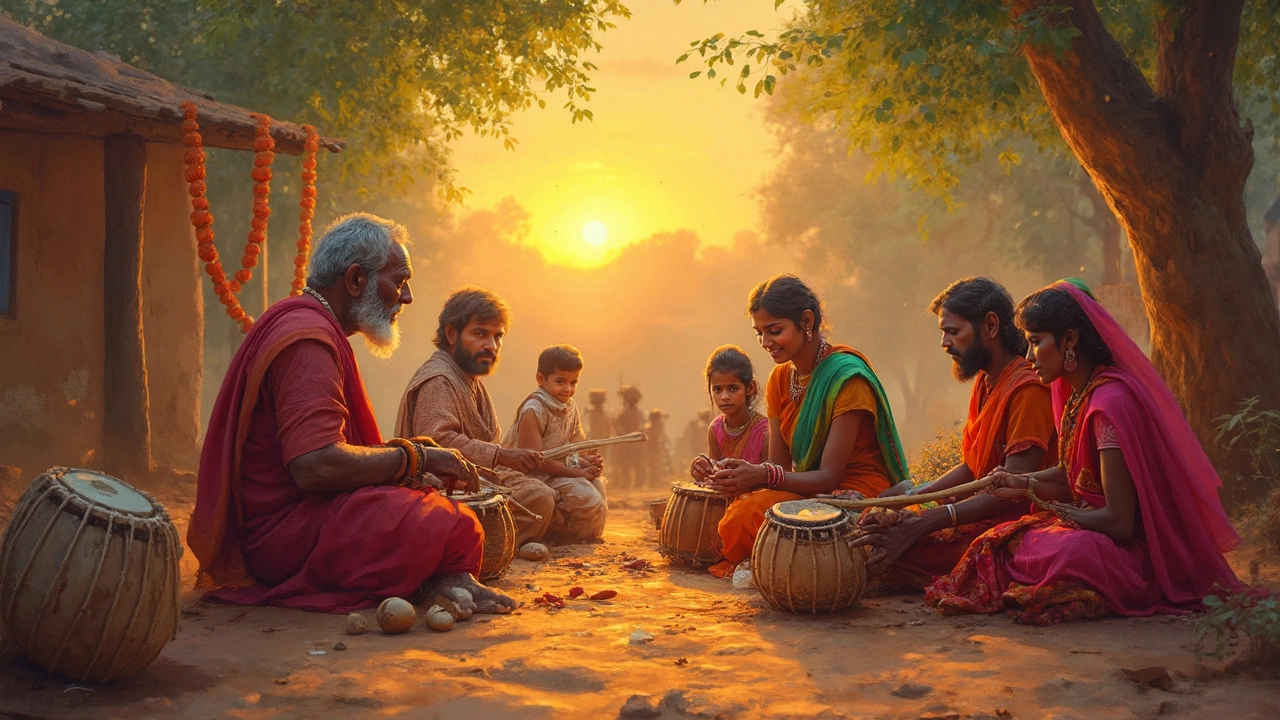
Oldest Folk Music in India: Ancient Traditions, Stories, and Sounds
Travel back to India's ancient roots. Discover the oldest folk music, its origins, stories, and timeless tunes still echoing in villages and celebrations.
If you love music that feels like a living piece of history, Indian folk tunes are a gold mine. From the deserts of Rajasthan to the hills of Bengal, some songs have been sung for centuries and still sound fresh today. This page tells you what makes a folk song "old," which traditions are the oldest, and how you can hear them right now.
People call a folk song old when it can be traced back many generations, often before written records were common. These songs travel by word of mouth, so the lyrics and melodies change a bit each time they’re passed on. The oldest Indian folk music usually ties to daily life, rituals, or seasonal work, and it uses local instruments that have survived for hundreds of years.
Scholars look at the language, the story, and the instruments to guess an age. When a song mentions a historic event or uses a dialect that disappeared a long time ago, it’s a strong clue. In many cases, the music is linked to a particular community’s identity, so even if the exact year isn’t known, the tradition is respected as ancient.
1. Baul Songs (Bengal) – Bauls are wandering mystic singers from West Bengal and Bangladesh. Their songs date back to the medieval Bhakti movement, around the 13th–15th centuries. Baul music blends spiritual verses with simple chords on a ektara (one‑stringed lute). The themes are love, devotion, and the search for the divine.
2. Rajasthani Maand (Rajasthan) – Maand is a semi‑classical style that grew from royal courts and desert caravans. Its roots go back to the 15th century, making it one of the oldest courtly folk forms. Instruments like the khama (a type of drum) and the algoza (double flute) give Maand its haunting, airy sound.
3. Lavani (Maharashtra) – Lavani started in the 16th century as a fast‑paced dance song performed in courtesan circles. The beats of the dholki and the melodic line of the harmonium create a lively rhythm that still powers folk festivals today.
4. Bihu (Assam) – Bihu songs celebrate the Assamese New Year and the spring harvest. They have been sung for over 500 years, with simple drum patterns (the dhol) and flutes that echo the region’s wetlands. The lyrics are playful, often about love and nature.
5. Langa (Gujarat) – Langa songs belong to the Bhil tribe and trace back to ancient tribal rituals. They use the dhol, shehnai, and a resonant wooden instrument called the damru. The chants keep tribal legends alive.
All these traditions share a love for simple, repetitive melodies that are easy to remember. That’s why they survive: anyone can join in, even without formal training.
Want to hear them now? Look for folk music playlists on streaming platforms, search for the names above, or check out local cultural festivals. Many states host annual fairs where these songs are performed live, offering a genuine feel of the age‑old vibe.
Remember, the oldest folk music isn’t just about history; it’s about living culture. When you listen, you’re hearing stories that have survived wars, migrations, and modern life. That makes each note a bridge between past and present.

Travel back to India's ancient roots. Discover the oldest folk music, its origins, stories, and timeless tunes still echoing in villages and celebrations.